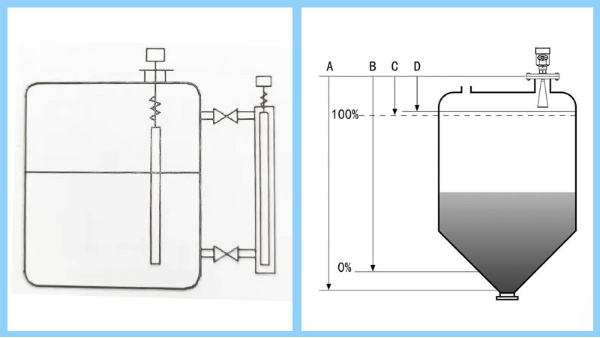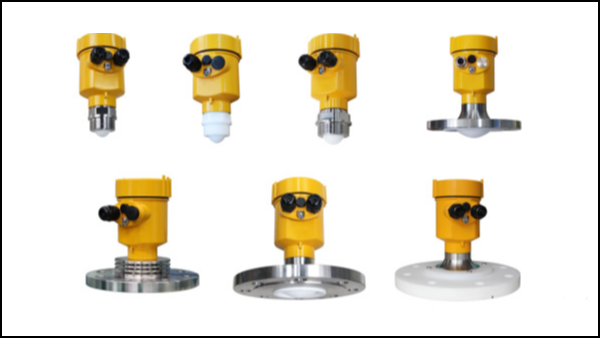The buoyancy level meter is a level measurement method that emerged after the direct vision and float methods. This method is based on the difference between the weight of the buoyancy device itself and the buoyancy force exerted on it by the liquid being measured.
The biggest advantage of this measurement is the high accuracy of the measurement, as the detection element (float) is made of stainless steel or a special alloy, so it is resistant to high temperatures and high pressures. Even at high temperatures and pressures, it can be measured accurately.
Its disadvantage is that density changes have an impact on the measurement accuracy and it is awkward to install. Previously, the sensor of a buoyancy level meter was installed inside the vessel. However, for later maintenance and accurate measurement, the sensor of the buoyancy level meter started to be installed in the bypass tube.

There are two types of radar level meters, contact and non-contact. Contact radar level meters are mainly guided wave radar level meters, while non-contact radar level meters mainly refer to high-frequency radar level meters.
The guided wave radar level meter mainly uses a detection assembly for the propagation of microwave pulses. It has good applications for the measurement of low dielectric constant liquid levels and for the measurement of corrosive liquid levels. However, this type of measurement is not suitable for media with agitation in the tank.
High-frequency radar level meter microwave pulses are mainly transmitted via the antenna, its biggest advantage is that the frequency is higher, the wavelength is shorter and the wave speed aggregation effect is better, which is conducive to the application of more working conditions. When selecting the type, different antennas and process connections can be chosen according to different working conditions.

Liquid level measurement, as far back as 5000 years ago, was already present in Egypt. Currently, there are more and more ways of measuring and the technology used is becoming more and more varied. Both buoyancy level meters and radar level meters are designed and developed based on different principles, which have their advantages and disadvantages. When choosing, we must consider all aspects.
